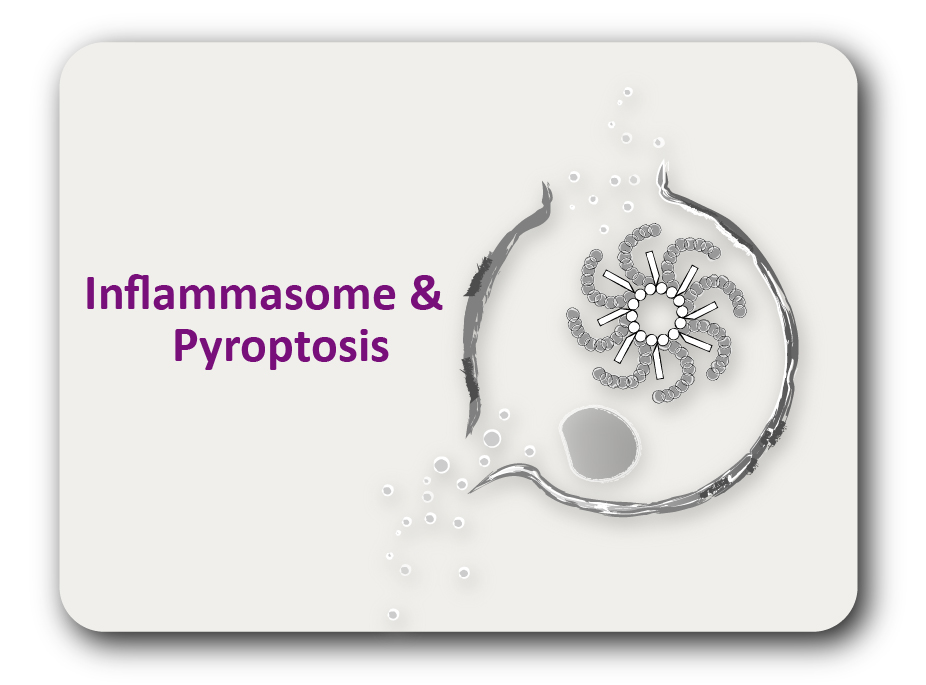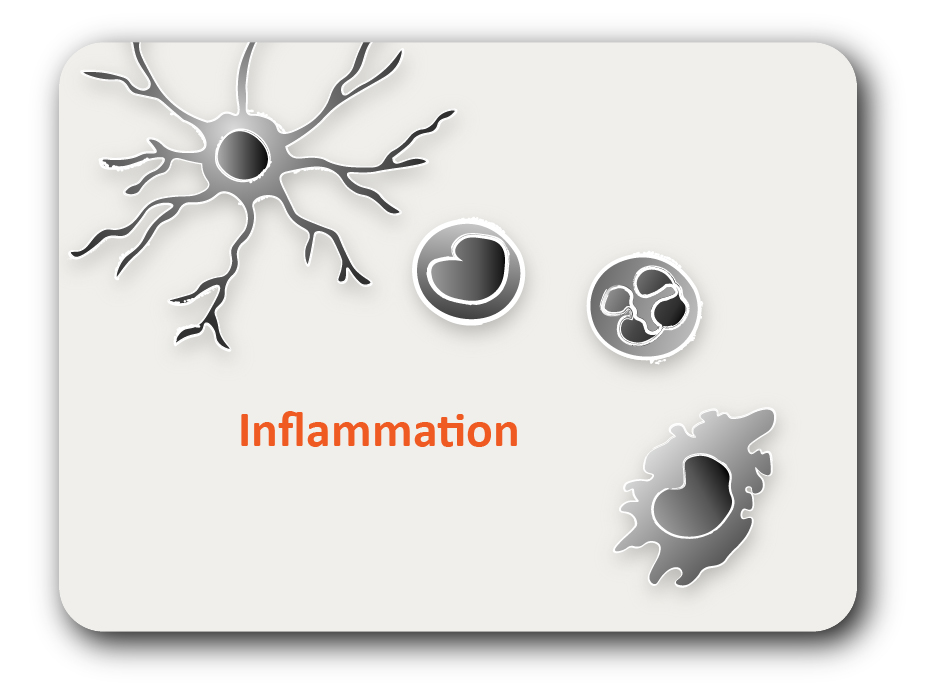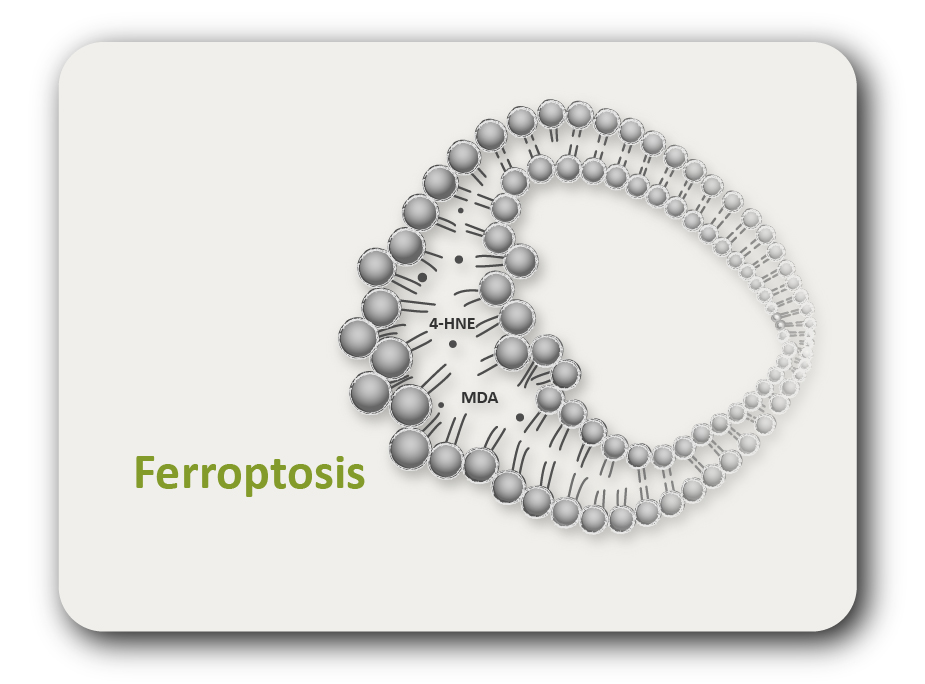ARG83523
arigoPLEX® Mouse M1/M2/MDSC Cytokine Multiplex ELISA Kit (IFN gamma, IL4, IL6, IL10, IL12, GM-CSF, TNF alpha, MCP1)
arigoPLEX® Mouse M1/M2/MDSC Cytokine Multiplex ELISA 试剂盒 (IFN gamma, IL4, IL6, IL10, IL12, GM-CSF, TNF alpha, MCP1) for ELISA and Mouse
概述
| 产品描述 | ARG83523 arigoPLEX® Mouse M1/M2/MDSC Cytokine Multiplex ELISA Kit (IFN gamma, IL4, IL6, IL10, IL12, GM-CSF, TNF alpha, MCP1) is an Enzyme Immunoassay kit for the quantification of IFN gamma, IL4, IL6, IL10, IL12(p70), GM-CSF, TNF alpha, MCP1 in Mouse serum, plasma and cell culture supernatants. See all Multiplex ELISA kits |
|---|---|
| 反应物种 | Ms |
| 应用 | ELISA |
| 靶点名称 | M1/M2/MDSC Cytokine |
| 偶联标记 | HRP |
| 偶联标记说明 | Substrate: TMB and read at 450 nm. |
| 灵敏度 | IFN gamma: 15.6 pg/ml IL4: 15.6 pg/ml IL6: 31.25 pg/ml IL10: 7.8 pg/ml IL12: 31.25 pg/ml GM-CSF: 7.8 pg/ml TNF alpha: 15.6 pg/ml MCP1: 3.9 pg/ml |
| 样品类型 | Serum, plasma and cell culture supernatants. |
| 标准范围 | IFN gamma: 31.25 - 1000 pg/ml IL4: 31.25 - 1000 pg/ml IL6: 62.5 - 2000 pg/ml IL10: 15.6 - 500 pg/ml IL12: 62.5 - 2000 pg/ml GM - CSF: 15.6 - 500 pg/ml TNF alpha: 31.25 - 1000 pg/ml MCP1: 7.8 - 250 pg/ml |
| 样本量 | 50 µl |
应用说明
| 检测时间 | 4.5 hours |
|---|
属性
| 形式 | 96 well |
|---|---|
| 存放说明 | Store components at 4°C or -20°C. Keep microplate wells sealed in a dry bag with desiccants. Do not expose test reagents to heat, sun or strong light during storage and usage. Please refer to the product user manual for detail temperatures of the components. |
| 注意事项 | For laboratory research only, not for drug, diagnostic or other use. |
生物信息
| 基因名称 | IFNG; IL4; IL6; IL10; IL12A; CSF2; TNF; CCL2 |
|---|---|
| 全名 | Interferon Gamma; Interleukin 4; Interleukin 6; Interleukin 10; Interleukin 12A; Colony Stimulating Factor 2; Tumor Necrosis Factor; C-C Motif Chemokine Ligand 2 |
| 背景介绍 | IFN gamma:This gene encodes a soluble cytokine that is a member of the type II interferon class. The encoded protein is secreted by cells of both the innate and adaptive immune systems. The active protein is a homodimer that binds to the interferon gamma receptor which triggers a cellular response to viral and microbial infections. Mutations in this gene are associated with an increased susceptibility to viral, bacterial and parasitic infections and to several autoimmune diseases. [provided by RefSeq, Dec 2015] IL4:The protein encoded by this gene is a pleiotropic cytokine produced by activated T cells. This cytokine is a ligand for interleukin 4 receptor. The interleukin 4 receptor also binds to IL13, which may contribute to many overlapping functions of this cytokine and IL13. STAT6, a signal transducer and activator of transcription, has been shown to play a central role in mediating the immune regulatory signal of this cytokine. This gene, IL3, IL5, IL13, and CSF2 form a cytokine gene cluster on chromosome 5q, with this gene particularly close to IL13. This gene, IL13 and IL5 are found to be regulated coordinately by several long-range regulatory elements in an over 120 kilobase range on the chromosome. IL4 is considered an important cytokine for tissue repair, counterbalancing the effects of proinflammatory type 1 cytokines, however, it also promotes allergic airway inflammation. Moreover, IL-4, a type 2 cytokine, mediates and regulates a variety of human host responses such as allergic, anti-parasitic, wound healing, and acute inflammation. This cytokine has been reported to promote resolution of neutrophil-mediated acute lung injury. In an allergic response, IL-4 has an essential role in the production of allergen-specific immunoglobin (Ig) E. This pro-inflammatory cytokine has been observed to be increased in COVID-19 (Coronavirus disease 2019) patients, but is not necessarily associated with severe COVID-19 pathology. Two alternatively spliced transcript variants of this gene encoding distinct isoforms have been reported. [provided by RefSeq, Aug 2020] IL6:This gene encodes a cytokine that functions in inflammation and the maturation of B cells. In addition, the encoded protein has been shown to be an endogenous pyrogen capable of inducing fever in people with autoimmune diseases or infections. The protein is primarily produced at sites of acute and chronic inflammation, where it is secreted into the serum and induces a transcriptional inflammatory response through interleukin 6 receptor, alpha. The functioning of this gene is implicated in a wide variety of inflammation-associated disease states, including suspectibility to diabetes mellitus and systemic juvenile rheumatoid arthritis. Elevated levels of the encoded protein have been found in virus infections, including COVID-19 (disease caused by SARS-CoV-2). [provided by RefSeq, Aug 2020] IL10:The protein encoded by this gene is a cytokine produced primarily by monocytes and to a lesser extent by lymphocytes. This cytokine has pleiotropic effects in immunoregulation and inflammation. It down-regulates the expression of Th1 cytokines, MHC class II Ags, and costimulatory molecules on macrophages. It also enhances B cell survival, proliferation, and antibody production. This cytokine can block NF-kappa B activity, and is involved in the regulation of the JAK-STAT signaling pathway. Knockout studies in mice suggested the function of this cytokine as an essential immunoregulator in the intestinal tract. Mutations in this gene are associated with an increased susceptibility to HIV-1 infection and rheumatoid arthritis. [provided by RefSeq, May 2020] IL12:This gene encodes a subunit of a cytokine that acts on T and natural killer cells, and has a broad array of biological activities. The cytokine is a disulfide-linked heterodimer composed of the 35-kD subunit encoded by this gene, and a 40-kD subunit that is a member of the cytokine receptor family. This cytokine is required for the T-cell-independent induction of interferon (IFN)-gamma, and is important for the differentiation of both Th1 and Th2 cells. The responses of lymphocytes to this cytokine are mediated by the activator of transcription protein STAT4. Nitric oxide synthase 2A (NOS2A/NOS2) is found to be required for the signaling process of this cytokine in innate immunity. [provided by RefSeq, Jul 2008] GM-CSF:The protein encoded by this gene is a cytokine that controls the production, differentiation, and function of granulocytes and macrophages. The active form of the protein is found extracellularly as a homodimer. This gene has been localized to a cluster of related genes at chromosome region 5q31, which is known to be associated with interstitial deletions in the 5q- syndrome and acute myelogenous leukemia. Other genes in the cluster include those encoding interleukins 4, 5, and 13. This gene plays a role in promoting tissue inflammation. Elevated levels of cytokines, including the one produced by this gene, have been detected in SARS-CoV-2 infected patients that develop acute respiratory distress syndrome. Mice deficient in this gene or its receptor develop pulmonary alveolar proteinosis. [provided by RefSeq, Aug 2020] TNF alpha:This gene encodes a multifunctional proinflammatory cytokine that belongs to the tumor necrosis factor (TNF) superfamily. This cytokine is mainly secreted by macrophages. It can bind to, and thus functions through its receptors TNFRSF1A/TNFR1 and TNFRSF1B/TNFBR. This cytokine is involved in the regulation of a wide spectrum of biological processes including cell proliferation, differentiation, apoptosis, lipid metabolism, and coagulation. This cytokine has been implicated in a variety of diseases, including autoimmune diseases, insulin resistance, psoriasis, rheumatoid arthritis ankylosing spondylitis, tuberculosis, autosomal dominant polycystic kidney disease, and cancer. Mutations in this gene affect susceptibility to cerebral malaria, septic shock, and Alzheimer disease. Knockout studies in mice also suggested the neuroprotective function of this cytokine. [provided by RefSeq, Aug 2020] MCP1:This gene is one of several cytokine genes clustered on the q-arm of chromosome 17. Chemokines are a superfamily of secreted proteins involved in immunoregulatory and inflammatory processes. The superfamily is divided into four subfamilies based on the arrangement of N-terminal cysteine residues of the mature peptide. This chemokine is a member of the CC subfamily which is characterized by two adjacent cysteine residues. This cytokine displays chemotactic activity for monocytes and basophils but not for neutrophils or eosinophils. It has been implicated in the pathogenesis of diseases characterized by monocytic infiltrates, like psoriasis, rheumatoid arthritis and atherosclerosis. It binds to chemokine receptors CCR2 and CCR4. Elevated expression of the encoded protein is associated with severe acute respiratory syndrome coronavirus 2 (SARS‐CoV‐2) infection. [provided by RefSeq, Aug 2020] |
| 生物功能 | IFN gamma:Participates in the regulation of hematopoietic stem cells during development and under homeostatic conditions by affecting their development, quiescence, and differentiation. [UniProt] IL4:Cytokine secreted primarily by mast cells, T-cells, eosinophils, and basophils that plays a role in regulating antibody production, hematopoiesis and inflammation, and the development of effector T-cell response. [UniProt] IL6:Through activation of IL6ST-YAP-NOTCH pathway, induces inflammation-induced epithelial regeneration (By similarity). [UniProt] IL10:Major immune regulatory cytokine that acts on many cells of the immune system where it has profound anti-inflammatory functions, limiting excessive tissue disruption caused by inflammation. Mechanistically, IL10 binds to its heterotetrameric receptor comprising IL10RA and IL10RB leading to JAK1 and STAT2-mediated phosphorylation of STAT3. [UniProt] IL12:IL-12 is primarily produced by professional antigen-presenting cells (APCs) such as B-cells and dendritic cells (DCs) as well as macrophages and granulocytes and regulates T-cell and natural killer-cell responses, induces the production of interferon-gamma (IFN-gamma), favors the differentiation of T-helper 1 (Th1) cells and is an important link between innate resistance and adaptive immunity. [UniProt] GM-CSF:Cytokine that stimulates the growth and differentiation of hematopoietic precursor cells from various lineages, including granulocytes, macrophages, eosinophils and erythrocytes. [UniProt] TNF alpha:Plays a role in angiogenesis by inducing VEGF production synergistically with IL1B and IL6. Promotes osteoclastogenesis and therefore mediates bone resorption (By similarity). [UniProt] MCP1:May be involved in the recruitment of monocytes into the arterial wall during the disease process of atherosclerosis. [UniProt] |
| 产品亮点 | Related news: M1/M2 Cytokine Multiplex ELISA Kit is launched; |
检测图片 (9) Click the Picture to Zoom In
-
Antibodies Coating Pattern In Microtiter Plate of arigoPLEX® Mouse M1/M2/MDSC Cytokine Multiplex ELISA Kit (FN gamma, IL4, IL6, IL10, IL12, GM-CSF, TNF alpha, MCP1)
-
arigoPLEX® Mouse M1/M2/MDSC Cytokine Multiplex ELISA Kit (IFN gamma, IL4, IL6, IL10, IL12, GM-CSF, TNF alpha, MCP1) standard curve image
arigoPLEX® Mouse M1/M2/MDSC Cytokine Multiplex ELISA Kit (IFN gamma, IL4, IL6, IL10, IL12, GM-CSF, TNF alpha, MCP1) results of a typical standard for Mouse IFN gamma run with optical density reading at 450 nm.
-
arigoPLEX® Mouse M1/M2/MDSC Cytokine Multiplex ELISA Kit (IFN gamma, IL4, IL6, IL10, IL12, GM-CSF, TNF alpha, MCP1) standard curve image
arigoPLEX® Mouse M1/M2/MDSC Cytokine Multiplex ELISA Kit (IFN gamma, IL4, IL6, IL10, IL12, GM-CSF, TNF alpha, MCP1) results of a typical standard for Mouse IL4 run with optical density reading at 450 nm.
-
arigoPLEX® Mouse M1/M2/MDSC Cytokine Multiplex ELISA Kit (IFN gamma, IL4, IL6, IL10, IL12, GM-CSF, TNF alpha, MCP1) standard curve image
arigoPLEX® Mouse M1/M2/MDSC Cytokine Multiplex ELISA Kit (IFN gamma, IL4, IL6, IL10, IL12, GM-CSF, TNF alpha, MCP1) results of a typical standard for Mouse IL6 run with optical density reading at 450 nm.
-
arigoPLEX® Mouse M1/M2/MDSC Cytokine Multiplex ELISA Kit (IFN gamma, IL4, IL6, IL10, IL12, GM-CSF, TNF alpha, MCP1) standard curve image
arigoPLEX® Mouse M1/M2/MDSC Cytokine Multiplex ELISA Kit (IFN gamma, IL4, IL6, IL10, IL12, GM-CSF, TNF alpha, MCP1) results of a typical standard for Mouse IL10 run with optical density reading at 450 nm.
-
arigoPLEX® Mouse M1/M2/MDSC Cytokine Multiplex ELISA Kit (IFN gamma, IL4, IL6, IL10, IL12, GM-CSF, TNF alpha, MCP1) standard curve image
arigoPLEX® Mouse M1/M2/MDSC Cytokine Multiplex ELISA Kit (IFN gamma, IL4, IL6, IL10, IL12, GM-CSF, TNF alpha, MCP1) results of a typical standard for Mouse IL12 run with optical density reading at 450 nm.
-
arigoPLEX® Mouse M1/M2/MDSC Cytokine Multiplex ELISA Kit (IFN gamma, IL4, IL6, IL10, IL12, GM-CSF, TNF alpha, MCP1) standard curve image
arigoPLEX® Mouse M1/M2/MDSC Cytokine Multiplex ELISA Kit (IFN gamma, IL4, IL6, IL10, IL12, GM-CSF, TNF alpha, MCP1) results of a typical standard for Mouse GM-CSF run with optical density reading at 450 nm.
-
arigoPLEX® Mouse M1/M2/MDSC Cytokine Multiplex ELISA Kit (IFN gamma, IL4, IL6, IL10, IL12, GM-CSF, TNF alpha, MCP1) standard curve image
arigoPLEX® Mouse M1/M2/MDSC Cytokine Multiplex ELISA Kit (IFN gamma, IL4, IL6, IL10, IL12, GM-CSF, TNF alpha, MCP1) results of a typical standard for Mouse TNF alpha run with optical density reading at 450 nm.
-
arigoPLEX® Mouse M1/M2/MDSC Cytokine Multiplex ELISA Kit (IFN gamma, IL4, IL6, IL10, IL12, GM-CSF, TNF alpha, MCP1) results of a typical standard for Mouse MCP1 run with optical density reading at 450 nm.
arigoPLEX® Mouse M1/M2/MDSC Cytokine Multiplex ELISA Kit (IFN gamma, IL4, IL6, IL10, IL12, GM-CSF, TNF alpha, MCP1) results of a typical standard for Mouse MCP1 run with optical density reading at 450 nm.
| Title | Download Link |
|---|---|
| ARG83523 arigoPLEX® Mouse M1/M2/MDSC Cytokine Multiplex ELISA Kit (IFN gamma, IL4, IL6, IL10, IL12, GM-CSF, TNF alpha, MCP1, TNF alpha) User manual |
 Download Download
|













